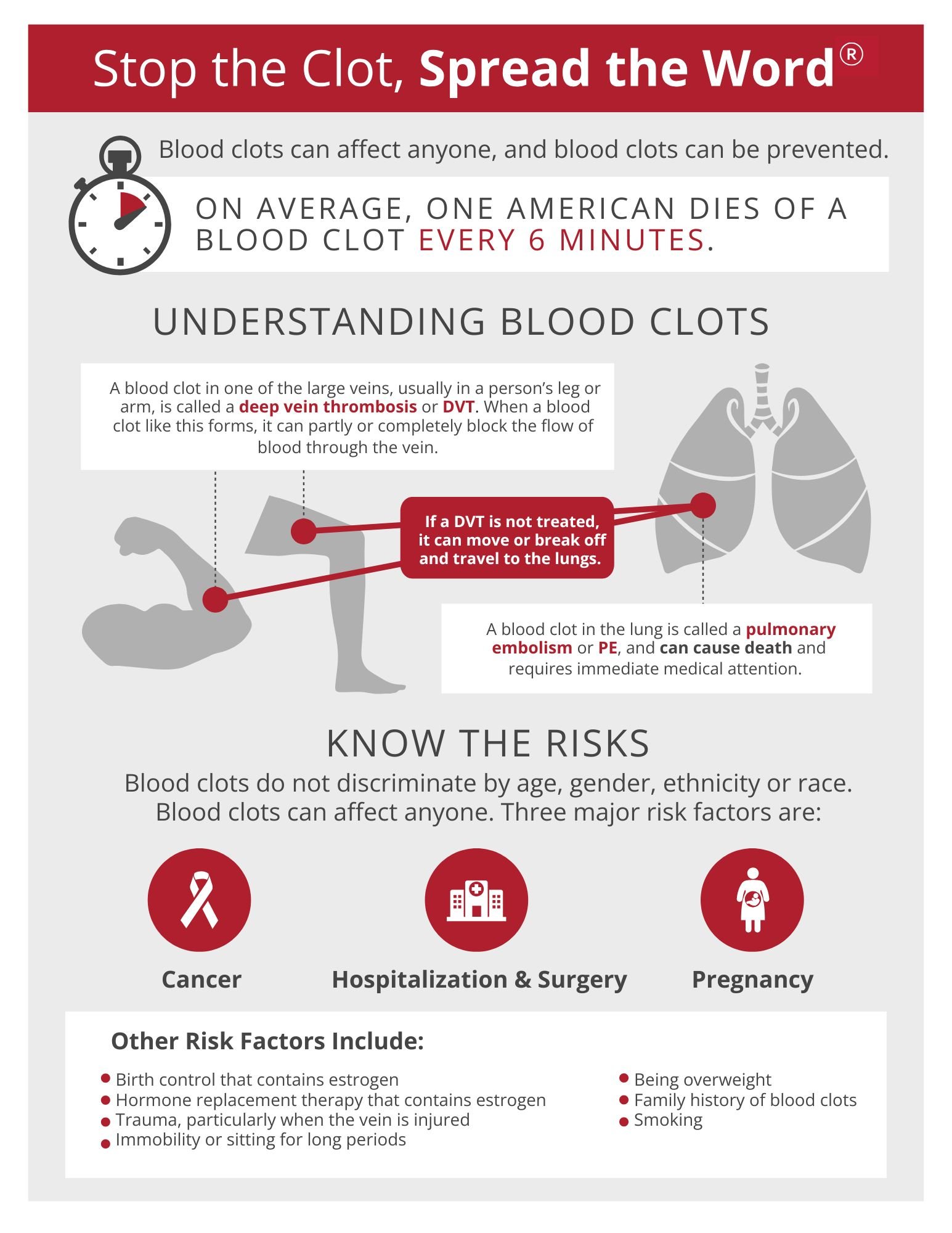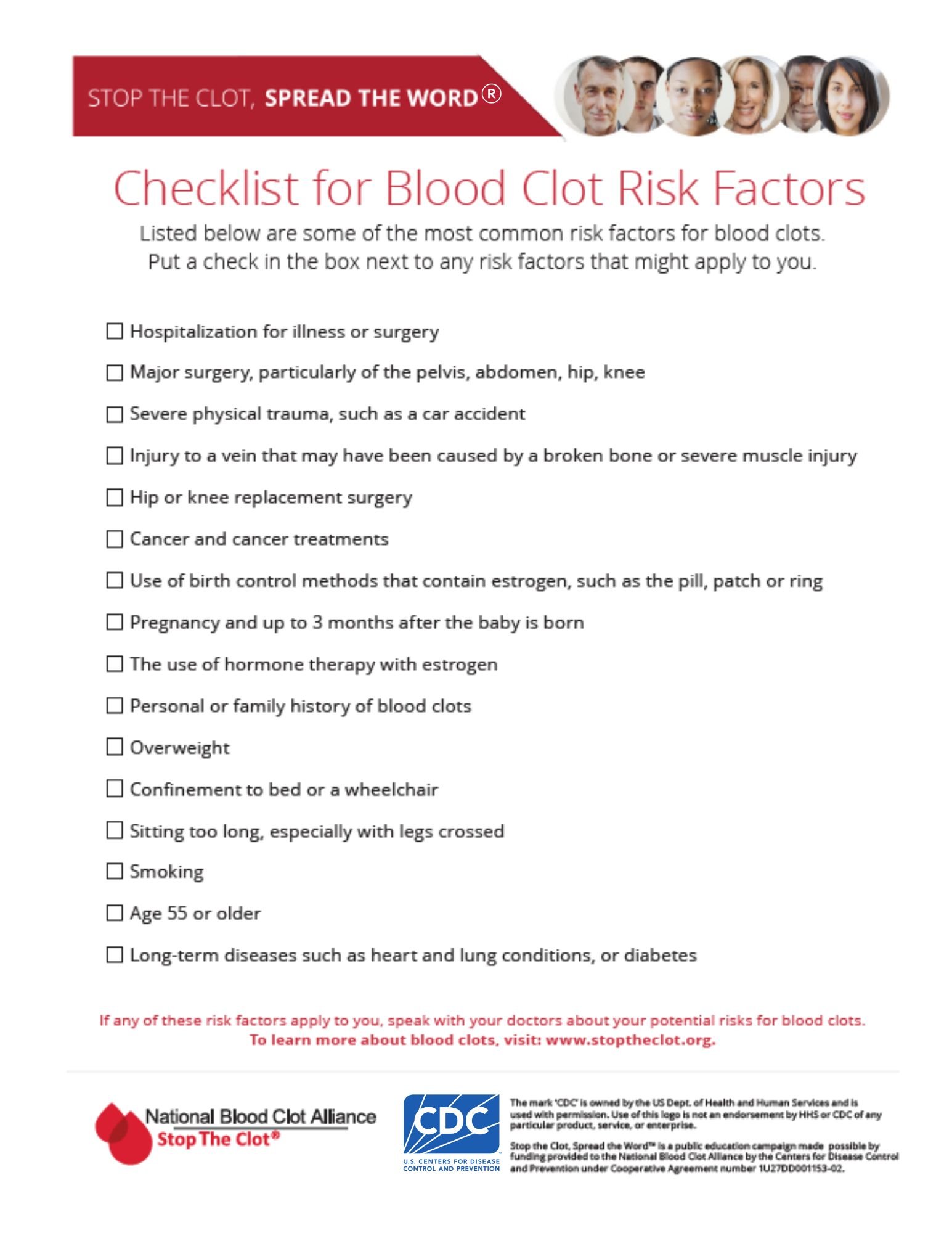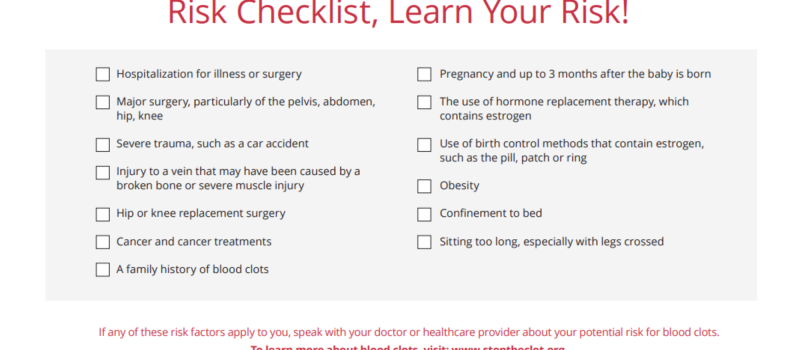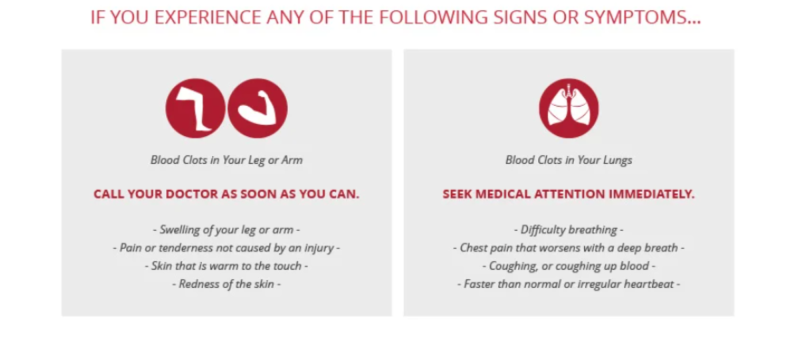A Blood Clot Can Happen to Anyone.
Don’t Let a Blood Clot Happen to You.
Blood Clots Can Be Prevented.
Don’t Let a Blood Clot Happen to You.
Blood Clots Can Be Prevented.
Know your Risk Factors
Am I at risk for a blood clot?
Blood Clot Risk Factors
- Hospitalization for illness or surgery
- Major surgery, particularly of the pelvis, abdomen, hip, knee
- Severe physical trauma, such as a car accident
- Injury to a vein that may have been caused by a broken bone or severe muscle injury
- Hip or knee replacement surgery
- Cancer and cancer treatments
- Use of birth control methods that contain estrogen, such as the pill, patch or ring
- Pregnancy and up to 3 months after the baby is born
- The use of hormone therapy with estrogen
- A family history of blood clots
- Overweight
- Confinement to bed or wheelchair
- Sitting too long, especially with legs crossed
- Smoking
- Age 55 or older
- Long-term diseases such as heart and lung conditions, or diabetes
Hospitalization, particularly involving trauma, surgery, or immobility due to serious illness or injury, is a major risk factor for blood clots.
Click on the image below to learn how hospitalization puts you at greater risk for a blood clot.
Other risk factors include:
• Pregnancy • Cancer and its treatment • Personal or family history of blood clots • Birth control or hormone therapy with estrogen • Smoking • Overweight • Age 55 or older • Long-term diseases such as heart and lung conditions, or diabetes
The first and most important thing you can do to protect yourself from a life-threatening blood clot is to learn if you are at risk.
Click on the icon below to download and print the risk factors checklist at left, and then discuss your potential risk factors with your doctor or healthcare provider.
Tell your doctor if you experience any of the signs or symptoms of a blood clot.
There are several important signs and symptoms of blood clots. If you can recognize these signs and symptoms, you can save your life or the life of a friend or family member.
If you experience any of the following signs or symptoms…
SYMPTOMS OF A BLOOD CLOT IN THE ARM OR LEG MAY INCLUDE:
– Swelling –
– Pain or tenderness not caused by injury –
– Skin that is warm to the touch –
– Redness or discoloration of the skin –
If you have these signs or symptoms, alert your doctor as soon as possible.
SYMPTOMS OF A BLOOD CLOT IN THE LUNG MAY INCLUDE:
– Difficulty breathing –
– Chest pain that worsens with a deep breath –
– Coughing, or coughing up blood –
– Faster than normal or irregular heartbeat –
Seek immediate attention if you experience these signs or symptoms.
Blood clots can be safely treated.
Blood Clots can be prevented
The Best Ways to Prevent Blood Clots Include:
Stop the Clot, Spread the Word®
The National Blood Clot Alliance and the Centers for Disease Control and Prevention are working on this important public health campaign to get the word out about blood clot risks and the signs and symptoms of blood clots.
You can be an important part of this education campaign by helping us
SPREAD THE WORD®
Please Share This Page
Other Campaign Items to Share
For more information about blood clots, visit:
The information and materials on this site are provided for general information purposes only. You should not rely on the information provided as a substitute for actual professional medical advice, care, or treatment. This site is not designed to and does not provide medical advice, professional diagnosis, opinion, treatment, or services to you or any individual. If you believe you have a medical emergency, call 911 immediately.
Stop the Clot, Spread the Word® is a public education campaign made possible by funding provided to the National Blood Clot Alliance by the Centers for Disease Control and Prevention under Cooperative Agreement number 1U27DD001153-02.
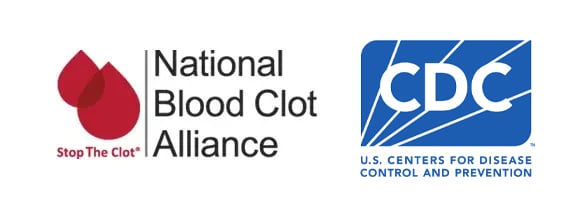
The mark ‘CDC’ is owned by the US Dept. of Health and Human Services and is used with permission. Use of this logo is not an endorsement by HHS or CDC of any particular product, service, or enterprise.

